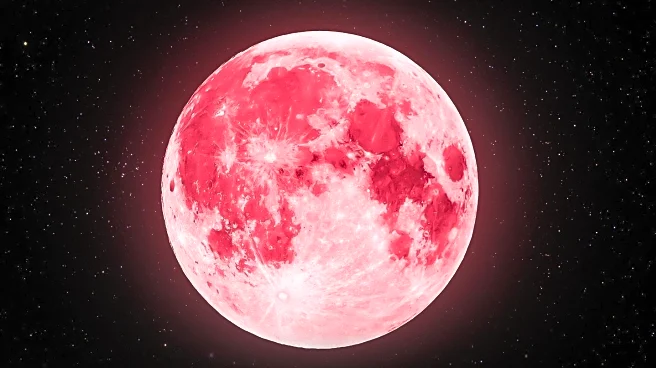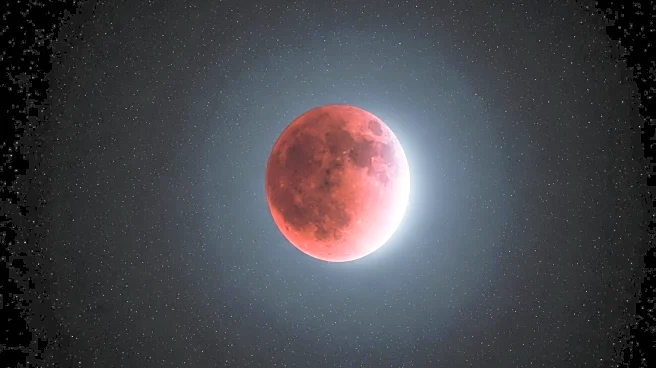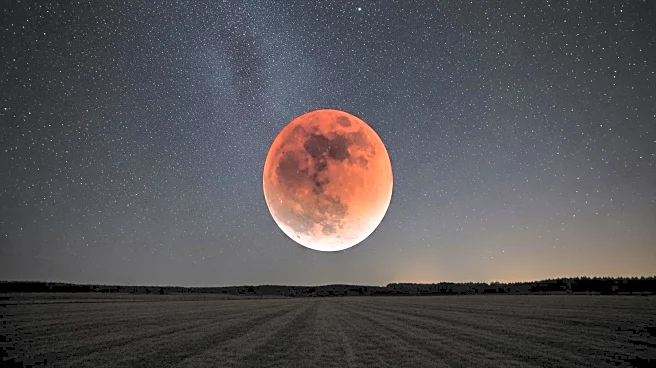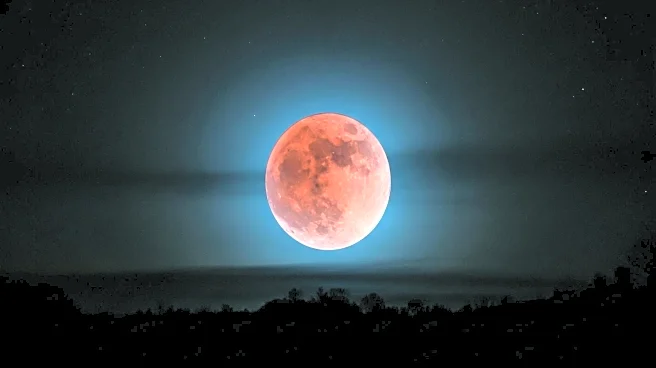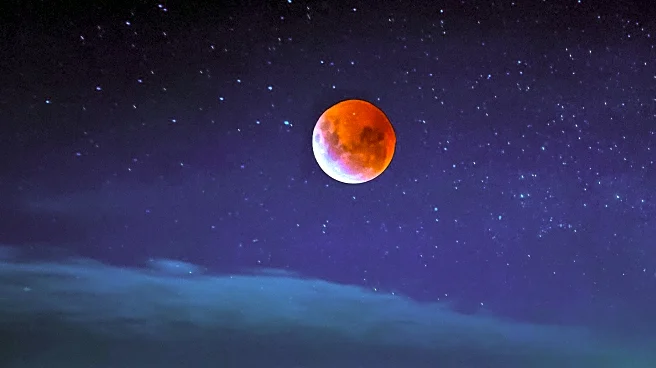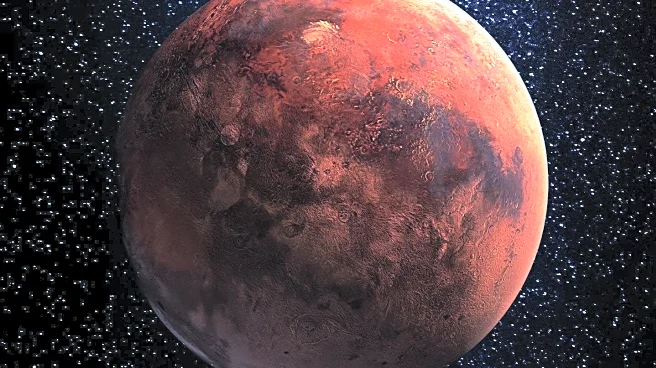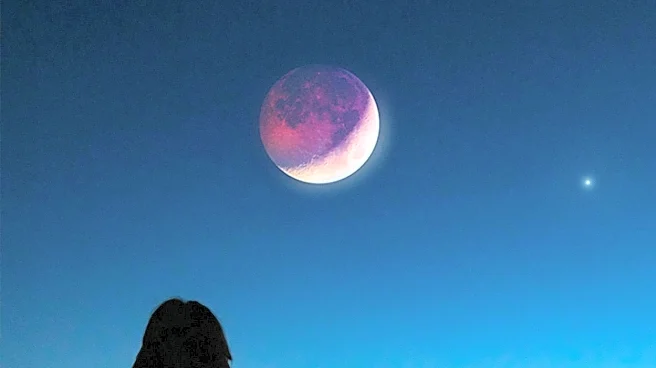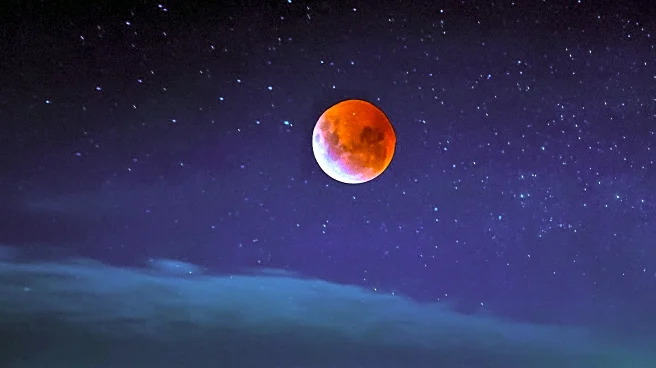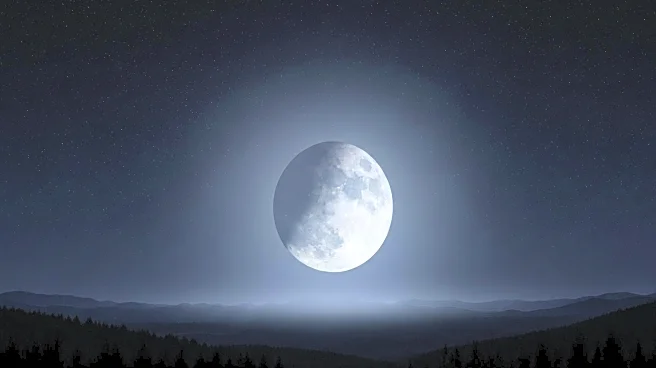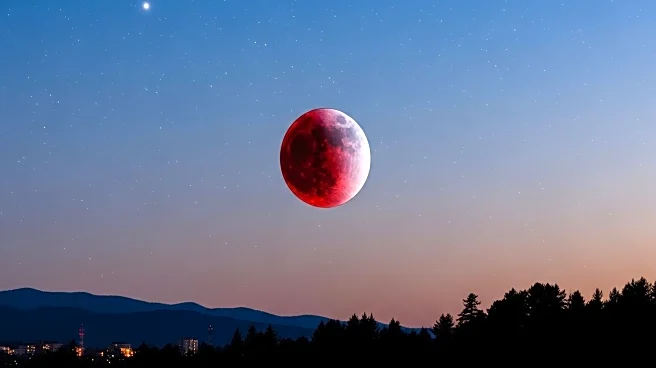What's Happening?
A total lunar eclipse is set to occur overnight from Sunday, September 7, into the early hours of Monday, September 8, 2025. During this celestial event, the full Moon will pass into Earth's shadow, transforming into a striking red 'Blood Moon.' The eclipse will last for approximately 82 minutes, providing a spectacular view for skywatchers across Asia, Western Australia, and Europe. Nearly 77% of the world's population will have the opportunity to witness this phenomenon. The eclipse will reach its maximum phase at 5:11 p.m. EDT on September 7, 2025, when the Moon will be fully immersed in Earth's shadow. Totality, or complete coverage, will last for 82 minutes, offering a unique visual experience.
Why It's Important?
The Blood Moon phenomenon is significant for both scientific and cultural reasons. Scientifically, it provides an opportunity to study the Earth's atmosphere and its effects on light scattering, which causes the Moon to appear red. Culturally, lunar eclipses have been observed and revered throughout history, often associated with various myths and beliefs. This event allows for global participation, as skywatchers from diverse regions can share in the experience, fostering a sense of unity and wonder. Additionally, the eclipse is the last total lunar eclipse of 2025, making it a highly anticipated event for astronomers and enthusiasts alike.
What's Next?
Skywatchers in regions with clear skies will have the best chance to witness the reddish glow of the Moon as it enters and deepens into totality. For those in areas with poor weather or limited visibility, free livestreams will broadcast the entire event online, ensuring that the Blood Moon spectacle can be enjoyed worldwide. Websites such as Space.com will provide real-time coverage and updates, allowing people to experience the event virtually. This accessibility highlights the growing role of technology in connecting people to astronomical events.
Beyond the Headlines
The Blood Moon phenomenon also underscores the importance of public engagement in science and astronomy. Events like these can inspire interest in scientific fields and encourage educational activities related to space and celestial phenomena. Furthermore, the widespread coverage and accessibility of the event through online platforms demonstrate the potential for technology to enhance public understanding and appreciation of science.
